L’Institut ARTS soutient les projets de recherche suivants :
The Sillages project
“How can we bring to life geological processes unfolding on time and space scales beyond human perception? Anne-Magali transforms and then studies extra-thin pieces of rock on a nanometric scale to re-enacts intense disturbances of the past in the laboratory and interpret past movements of matter. Etienne re-enacts the slow movements of the world in graphic and scenic performances, to get closer to the moving logic of matter. Our aim is to bring these scientific and artistic approaches together in co-constructed research and performances, to set in motion the frozen landscapes of geology, and the overly compartmentalized representations of the scientific and artistic worlds. By renewing the imagination of science, and highlighting local human, geological and technological resources, we hope to contribute to the attractiveness of our region and our industries.”
Anne-Magali Seydoux-Guillaume is a mineralogist and microscopist, and is interested in the transformations of minerals in response to various processes, long (geological scale) or very fast (femto-second), at the nanoscale. She is also interested in perturbations in the recording of time measured in these same minerals. She approaches problems through two complementary approaches: laboratory experimentation and the study of natural systems.
Etienne Pageault is a visual artist and dancer. He frequently works in teams with partners in the scientific and/or technical fields, approaching visual and performance arts as territories conducive to the reunion of modes of thought, temporalities and complementary representation.
Beneath the surface: science and art
The natural sciences and art sometimes share a common desire to apprehend reality beyond the appearances and temporalities of everyday life. During our meeting, we were struck by the extent to which our research on time and matter converges, both in their subject matter and in their experimental method.
By making extra-thin rock slices (< 100 nm) and using high-resolution transmission electron microscopic (TEM) imaging, Anne-Magali Seydoux-Guillaume is interested in transformations in response to various processes (deformation, radioactivity, alteration, etc.) and in the recording of time in minerals. In particular, she reproduces in the laboratory the extreme conditions that have disturbed the atomic structure of rocks using laser.
For his part, Etienne Pageault works on the flows and structuring of the material by means of mineral fillers (salts, sands, powders and pigments) set in motion using air (blowers, compressors) and water instruments. He reproduces, in an approach comparable to that of Anne-Magali, the environmental conditions leading to the drawing of rocks and landscapes (deposits, erosion, alluvium, agglomerates, etc.).
Working on the imagination :
In the continuation of the project initiated with the Rhône-Alpes Institute of Complex Systems (IXXI) since 2023, we wish to combine our scientific and artistic experimental approaches to address these questions through co-constructed research and performances, aimed at various audiences. We wish to work from scientific material (data, representations, microscopic imaging, field samples, rock slides and dust, local mineralogical collections, etc.) …) by combining it with a thought of movement in optical, graphic and performative devices. In this way, we hope to develop the imaginary associated with the geological sciences in a staging of its sensitive contents, a renewal of its representations and a spotlight on its actors. This will make it possible, among other things, to reach audiences different from those usually reached by classical scientific popularization, by accessing knowledge through the field of the sensitive and the emotional (literally: setting in motion).
Maintaining this trans-disciplinary vocation, we wish to perform in spaces and events dedicated to science as well as art, as well as in contexts on the margins of traditional cultural mediation (schools, friendships, community centres) by adjusting the devices to the constraints of these spaces. We also plan to export (and/or produce) part of these facilities to Katowice, a Polish city with an industrial past echoing the Saint-Etienne basin, which will be European Capital of Science in 2024 and with which the university is already a partner (twinning of the “Transform4Europe” program).
The MOSAIC project
MOSAIC (Mastering Job-oriented skills an Arts and craft thanks to Centres of vocational excellence) is a European ERASMUS plus project involving 7 countries – Armenia, Belgium, Bulgaria, Canada, Finland, France and Italy – and 15 main partners – 6 training centres, 2 universities, one company, 3 chambers of commerce and industry, one mobility service provider, one cultural industries expert and one multiplier organisation – as well as a large number of secondary partners. Christophe Bardin Pr. Applied arts and glass work is the leader of MOSAIC’s WP3 at the UJM.
This project defines itself as follows : ” Through this project, we want to address some key issues for vocational training schools and companies dealing with crafts, tradition and creativity, providing concrete solutions in tune with our times, which will ensure the full employability of learners and the competitiveness of the business sector” (MOSAIC 2022).
In other words, what unites the different partner countries and the different stakeholders in the project is the collective reflection on the arts and crafts and, more especially, on their teaching.
It is important to emphasis that MOSAIC is the first CoVe to focus entirely on the arts and crafts sector, as part of the cultural and creative industries.
All in all, the aim of MOSAIC is to improve the quality of vocational training in these sectors in order to meet the challenges posed by digital, environmental and socio-economic developments, by proposing to generate innovations from three angles : technical, educational and social.
There are 6 working groups (WP), 3 of which are operational – WP 3 (research), WP 4 (training) and WP 5 (internalisation and experimentation). Within this MOSAIC project, UJM is the leader of WP 3 (research) which creates the scientific knowledge base for the next two operational WP (4 and 5). For this reason it is linked to all the specific objectives. In addition to the deliverables to document the results of the research, WP 3 aims to create a European Observatory of Crafts where all the data collected by the research will be accessible to practitioners.

To go further
The archives of the Art Centre Le Creux de l’Enfer
1 – Le Creux de l’enfer, an emblematic place of artistic and industrial creation
An emblematic and striking place in the town of Thiers, steeped in history and legends where the sound of sledgehammers and the roar of flames still dominate, Le Creux de l’enfer is traversed by the Durolle – a surging torrent that continually echoes through the space, to which no artist, no visitor can be indifferent. From the natural light of the first floor to the dark and humid atmosphere of the river below, Le Creux de l’enfer combines the qualities of a natural and historical site, which are particularly relevant for artists and the public who cannot escape this environment.
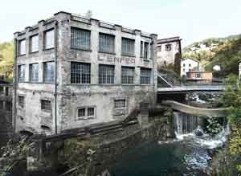
Created in 1988 in an exceptional industrial building in the Vallée des Usines, the art centre Le Creux de l’enfer is one of the pioneers of decentralisation. A completely atypical player in France, it has encouraged the emergence of significant works of contemporary art. Many of them were born of this context: the place has revealed itself as a territory of experimentation favourable to the production of new forms. Conceived as a place of research and creation, it benefits from an autonomy of programming and a great reactivity. As a true research unit, it is a place of projects and experiments conducive to the emergence of works that are often new and carried out by renowned or emerging artists. Like other art centres in France, it has contributed to the revelation of many young artists (Mounir Fatmi, Mona Hatoum, Claude Lévêque, Laurent Pariente, Maxime Lamarche, Aurélie Pétrel, Delphine Coindet, Anne-Lise Seusse, Sarah Tritz, Laurent Pernel, Marie Voignier, etc.) as well as to their national recognition, before their works were supported by the market and joined the collections of the Frac, museums, foundations and private collections.
Invested with the missions of production, distribution and mediation, the art centre has the vocation to create the most favourable conditions for the encounter between art and the public, notably through the annual programming of monographic or collective exhibitions, cycles of meetings and conferences, but also through exceptional public events in the presence of the artists.
The art centre creates the conditions for a fruitful exchange between artists and the widest possible audience. Located in the town of Thiers, in the Livradois-Forez Park, between the former regions of Auvergne and Rhône-Alpes, the contemporary art centre Le Creux de l’enfer is strategically located in the centre of a large region, in order to better assert an artistic identity of its own, independent of urban centres.
2 – Presentation of the project :
The historical and scientific approach to the links between manufacturing and artistic work will be carried out in collaboration between the team of the art centre Le Creux de l’enfer (project leader) and Anne Favier, professor in aesthetics and art sciences at Jean Monnet University.
At the end of this project, the aim will be to
- Selecting and digitising the founding historical visual documents of the art centre Le Creux de l’enfer (historical films of the inauguration of the art centre during the symposium, digitisation and indexing of photographic documents of the exhibitions) in order to constitute a scientific and referenced database for the use of all audiences and which will in particular make it possible to illustrate a freely downloadable online publication.
- To produce video sequences of interviews with artists, workers and industrialists who have worked at the art centre Le Creux de l’enfer. For this we will mainly rely on projects that have led to collaborations between artists and local entrepreneurs.
- To carry out public conferences to present the results of the work, placing manufacturing work and artistic work in parallel.
Some examples of photographic archives :
A history of the International Design Biennal
Born in 1998 out of the desire of a few teachers at the Saint Etienne School of Fine Arts, supported by its then director Jacques Bonnaval, the Saint Etienne Design Biennial has now become an event that is, if not unmissable, at least major in the field and in a singular local and regional landscape.
The research project aims to look back over thirty years of design and design exhibitions in Saint-Étienne by starting with the two Caravelles exhibitions – 1986 and 1991 in Lyon, Grenoble and Saint-Étienne -, the first major events outside Paris, where we find some of the names that made up the first team of the Saint-Étienne biennial, up to the 11th edition entitled “ME, YOU, NOUS: Créons un terrain d’entente” (ME, YOU, WE: Creating a common ground), held from 20 March 2019 to 22 April 2019, whose conception and reception gave rise to a number of questions.
This journey will question the transformations of an event both in its organisation – from two weeks to 1 month and 4 for the next edition – on the themes addressed – from a first exhibition on the Prisunic adventure in 1986 to a reflection on the mutations of work (2017) or on the “meaning of beauty” (2017) but also in a wider perspective including local political and economic actors – creation of the Cité du Design in 2005, inauguration in 2009, labelling of the city of Saint-Étienne as a UNESCO design city in 2010 – and nationally with the strong action of the public authorities in favour of design developed since 1981 – aid for creation, support for events, creation of the FRAC, FNAC, DRAC and CNAP, creation of the ENSCI among others.
A study carried out by the Cité du Design in 2009-2010, entitled Économie du design, summarises the weight and importance of design in French economic life over the last ten years. The number of jobs linked to this activity exceeds 50,000. The turnover (by demand) is estimated at between 3 and 5 billion euros with significant growth prospects. In this changed and constantly evolving landscape, the Saint Etienne Design Biennial now appears as a marker. The project, which aims to lay the foundations of this unique history, will make it possible to better identify, explore and qualify a notion – design – which is always difficult to define, as well as to understand the specific territorial issues at stake, both historically, aesthetically, economically and sociologically.

Methodology :
The basis of the research work will be done through the identification and analysis of the various documents at our disposal – archives of the biennial, catalogues, objects, city archives – and interviews with the various actors of the Saint-Étienne International Design Biennial – curator, designer, politician among others.
Contemporary arts and anthropocene
The “Contemporary Arts & Anthropocene” project is based on the collaboration of several institutions linked to the ARTS Project (College of Art and Design, College of Architecture, Cité du Design, Museum of Modern and Contemporary Art, Eclla Research Unit, École Urbaine de Lyon (Uban School of Lyon), Labex IMU – and international partners, University of Genoa, Lieven Gevaert Centre for Photography, Art and Visual Culture (Catholic University of Leuven/University of Leuven).
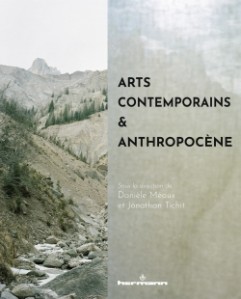
The research programme, led by Danièle Méaux, aims to examine the ways in which works of contemporary art – be they plastic, photographic, cinematographic or literary – think about the changes in the world that determine the growing use of the term “anthropocene” today. Far from artworks that reflect a romantic fascination for a nature close to its original state or productions designated as “ecological art”, the aim is to take into consideration and analyse artworks that work to problematise the changes in our lifestyles and the civilisational crisis we are going through. It is thus the way in which art can become a specific tool for understanding and analysing the dysfunctions of today’s world that is studied.
This project is punctuated by :
- An international symposium on 13, 14 and 15 October 2021 (replay);
- The exhibition “Matières précieuses”, curated by Stéphane Le Mercier, at the College of Art and Design, during October-November 2021;
- A cycle of interviews with artists including a meeting with Mathieu Asselin (May the 26th 2021), a meeting with Julien Guinand (replay).
- A regular column on the site of the Urban School of Lyon;
- The publication of the conference proceedings by Hermann Editions in 2022.
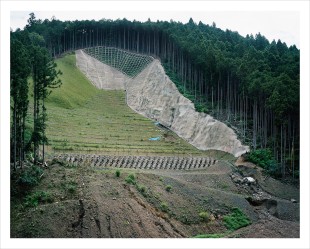
Contact : Danièle Méaux
Art and Childhood for a better world
On the strength of a long-standing international collaboration between the Department of Musicology of Jean Monnet University in Saint-Étienne and the Faculty of Music of the Université de Montréal, which has manifested itself in sustained teaching mobility between 2014 and 2017, Nathalie Fernando (professor and dean of the Faculty of Music at the Université de Montréal) and Anne Damon-Guillot (professor at the Jean Monnet University, head of the “Music and musicology” master’s degree) have initiated a joint research project on the crossroads of childhood and music.
Indeed, their scientific interests coincide.
On the one hand, the Faculty of Music of the Université de Montréal is involved in a project entitled “Music for Children”, in partnership with the Orchestre Symphonique de Montréal. Researchers are studying the impact of the music programme on the learning of reading and writing, on the understanding of mathematical concepts, fine and gross motor skills and social development.
On the other hand, with the support of the Société Française d’Ethnomusicologie, the Musée National de l’Éducation (Rouen), the research unit Eclla and the Department of Musicology, Anne Damon-Guillot is conducting a collective research project on the concept of the “musical child”. This research looks at the construction of “child folklore” from an epistemological perspective, drawing on a large collection of mostly unpublished archives. It also seeks to understand, through an ethnographic approach, the relationship between children and music, between ontological questions and the understanding of cultural representations.
The project “Art and childhood for a better world” goes beyond the links between childhood and music by questioning more broadly the encounter between art and childhood and its societal impact. Thus, artists, researchers, educators and cultural actors reflect together on the sources and issues of the association between art and childhood, through the prism of commitment. The project associates structures in the field (schools, musical ensembles, charitable and cultural associations, museums), particularly from the Rhône-Alpes region and Quebec, who are betting on the virtuous power of art and the receptivity of children. What can art do for the child? Can it make the world – the world of children and the world they share with adults – better? In what contexts and according to what expectations? By what means and in what ways? The project brings together various academic disciplines, ranging from art studies (musicology, visual arts) to socio-anthropology and history. It is based on the creation, by artists from the Rhône-Alpes region, of an original and committed work by the Quebec composer François-Hugues Leclair, L’Amour de la Terre. This musical tale with a children’s choir (Maîtrise de la Loire), which expresses itself on the environmental issues of our time, has been premiered at the University of Saint-Étienne in December 2021, in the presence of the composer.
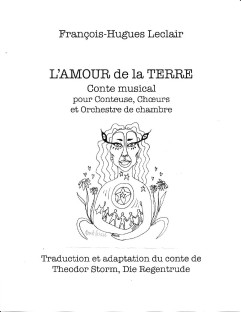
The “Art and childhood for a better world” project is characterised by the variety of its formats and the ambition of its multidisciplinary approach: an international symposium, interviews with renowned artists and the creation of a musical work. It combines international collaboration and local roots, research and teaching. In a desire to co-construct knowledge, it brings together researchers and actors in the field. It proposes new forms of research writing (radio documentary, exhibition, audiovisual montages). Finally, it initiates a collective reflection based on concrete artistic projects involved in society and whose mission is precisely to build “a better world”.
This project “Art and childhood for a better world” is supported by the Entretiens Jacques Cartier for the year 2020-2021. This mechanism, which aims to be a space for dialogue between actors from the academic, economic, institutional, scientific and associative worlds and citizen groups, encourages Franco-Quebec collaborations that respond to the spirit and missions of the Entretiens Jacques Cartier with a strong societal impact. In this exceptional year due to the health context, the Centre Jacques Cartier decided to give these Entretiens a two-part form: the organisation of a Virtual Summit which took place from 2 to 6 November 2020, followed by face-to-face Franco-Quebec Meetings which will take place on 13 October 2021.
The project “Art and childhood for a better world” is multi-sectoral and multi-disciplinary and therefore consists of two linked parts
- a virtual meeting, on 6 November 2020.This sequence can be viewed in replay on the EJC platform.
- a Franco-Quebec symposium, on October the 13rd 2021, during which the speaking will be distributed through conferences, interviews and round tables.
This symposium has been extended by the performance of the musical tale L’Amour de la Terre on December the 1st 2021 at 8pm in the presence of the composer in Saint-Étienne.
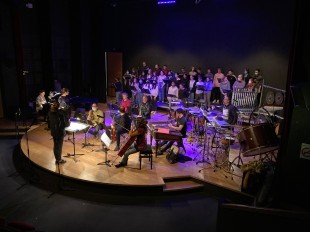
Contact : Anne Damon



